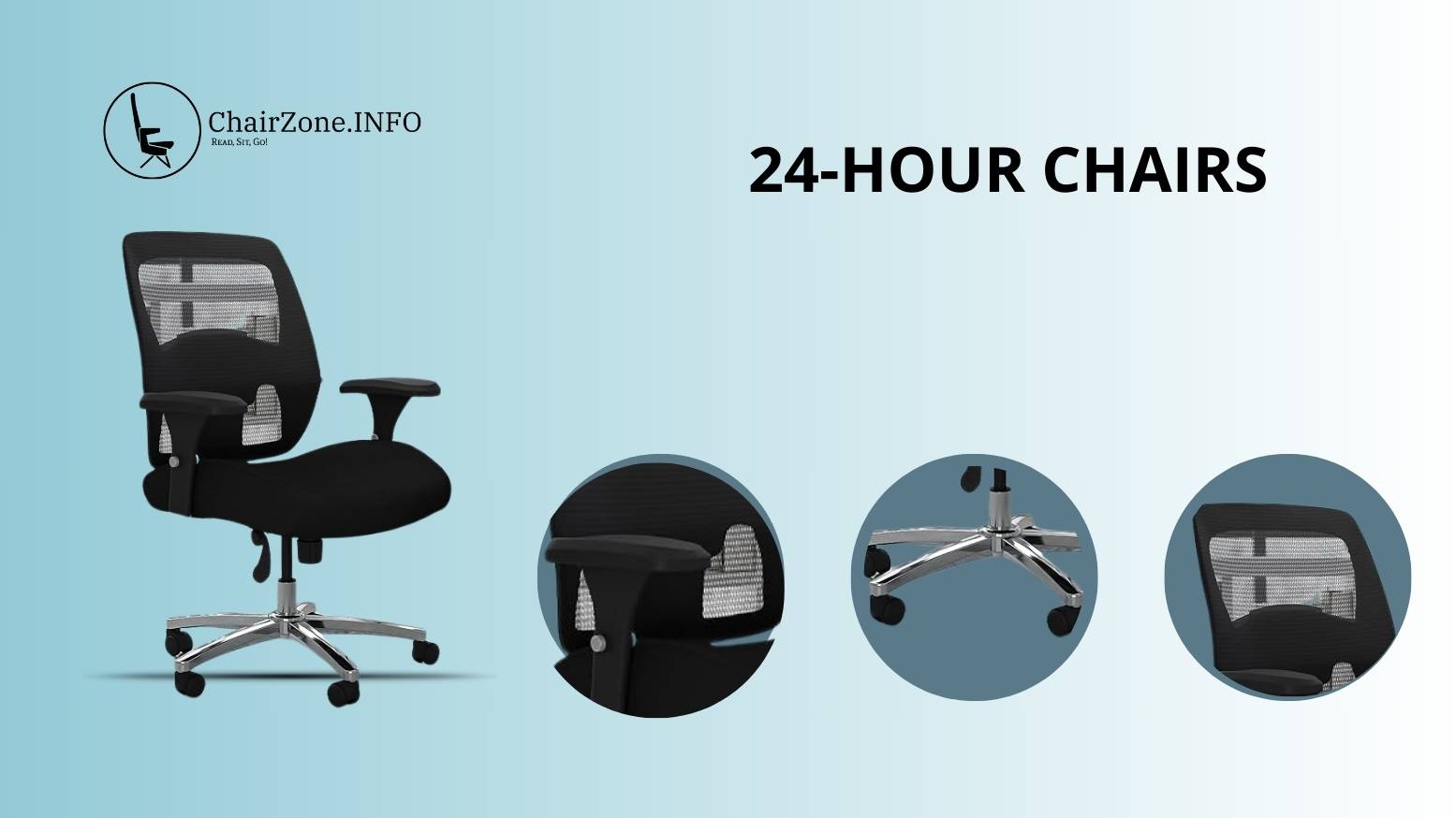The modern office is a dynamic space, and choosing the right office chair is crucial for comfort, productivity, and overall well-being. In this comprehensive guide, we’ll delve into various types of office chairs, each designed to meet specific needs within the workplace. From computer chairs to executive office chairs, kneel chairs, and more, we’ll explore their unique features, benefits, and how they contribute to a conducive work environment.
What are some office chairs?
Ergonomic chairs

Ergonomic chairs are specially designed to provide optimal comfort and support, taking into consideration the natural alignment of the human body. These chairs often feature adjustable components to suit individual preferences and promote a healthy sitting posture.
How to use the chair?
Ideal for individuals who spend prolonged hours at a desk or workstation, ergonomic chairs aim to reduce the risk of musculoskeletal issues and enhance overall well-being. They typically incorporate adjustable features such as lumbar support, adjustable armrests, seat height, and tilt mechanisms. Ergonomic chairs are suitable for various settings, including offices, home offices, and workspaces where users prioritize comfort and long-term health.
Computer chair

Computer chairs are ergonomically designed chairs with adjustable features, commonly mounted on wheels for easy mobility. They are specifically crafted to enhance comfort during desk work.
How to use the chair?
These chairs are ideal for individuals who spend extended periods at a computer. The ergonomic design promotes a healthy sitting posture, with features like proper lumbar support, height adjustment, and swivel capabilities. The wheels enable easy movement, allowing users to reach different parts of their workstation without straining.
Executive office chair

Computer chairs are ergonomically designed chairs with adjustable features, commonly mounted on wheels for easy mobility. They are specifically crafted to enhance comfort during desk work.
How to use the chair?
These chairs are ideal for individuals who spend extended periods at a computer. The ergonomic design promotes a healthy sitting posture, with features like proper lumbar support, height adjustment, and swivel capabilities. The wheels enable easy movement, allowing users to reach different parts of their workstation without straining.
Kneel chairs

Kneel chairs are designed to promote a forward-leaning posture by distributing the user’s weight between the buttocks and shins. They often have a unique design with a forward-sloping seat.
How to use the chair?
Kneel chairs are known for reducing lower back strain by encouraging a more open hip angle. They are suitable for individuals seeking to improve their posture and alleviate discomfort associated with prolonged sitting. These chairs offer an alternative sitting experience that can be particularly beneficial for those with lower back issues.
24-hour chairs

24-hour chairs are heavy-duty chairs built for continuous use, commonly found in call centers, control rooms, or any workplace with 24/7 operations.
How to use the chair?
Ideal for workplaces with extended operating hours, these chairs are designed to withstand constant use without compromising on support and ergonomic features. They prioritize durability and comfort, ensuring that individuals working in continuous shifts have a reliable and comfortable seating solution.
Armless office chairs
Armless office chairs are chairs without armrests, offering a sleek and minimalist design.
How to use the chair?
These chairs are versatile, fitting well under desks with limited space. They are suitable for workstations where users require freedom of movement and prefer a clean, uncluttered look. Armless office chairs are particularly popular in contemporary and collaborative office settings, providing a streamlined aesthetic.
Tablet chairs
Tablet chairs are equipped with a built-in writing or tablet surface, making them suitable for note-taking or tablet use during meetings.
How to use the chair?
Ideal for meeting rooms or collaborative spaces, tablet chairs offer a convenient writing or working surface. They facilitate productivity during discussions and presentations, allowing users to easily jot down notes or use electronic devices. These chairs promote an organized and efficient work environment.
Reception chairs –
Reception chairs are comfortable and welcoming chairs typically placed in reception areas or waiting rooms.
How to use the chair?
Reception chairs play a crucial role in forming the first impression of an office. They should be inviting and comfortable, providing a positive experience for visitors while they wait. These chairs contribute to the overall ambiance of the reception area and set the tone for the professionalism of the office.
Folding Office chairs
Folding office chairs are designed to be easily folded and stored, often used in flexible workspaces or for occasional use.
How to use the chair?
Practical for areas where flexibility is key, folding office chairs can be quickly set up for temporary workspaces or events. Their foldable design makes them easy to store when not in use, offering an ideal solution for versatile office environments with changing seating needs.
Stacking chairs
Stacking chairs are designed to be stacked when not in use, facilitating efficient storage.
How to use the chair?
Stacking chairs are excellent for spaces where flexibility and storage efficiency are essential. They can be quickly arranged for meetings or events and stacked neatly when the space needs to be cleared. These chairs are a practical solution for environments that require adaptability and space optimization.
Task chair
Task chairs are versatile, ergonomic chairs designed for various office tasks, including desk work and computer use. They typically feature a swivel base, adjustable height, and ergonomic design elements.
How to use the chair?
Ideal for individuals engaged in day-to-day office tasks, task chairs are well-suited for desks and workstations. They provide ergonomic support to promote a comfortable and productive work environment. With features such as adjustable height, lumbar support, and swivel capabilities, task chairs cater to the needs of users who spend extended periods at their desks.
Gaming chair
Gaming chairs are specialized chairs designed for gamers, featuring a distinctive, often race car-inspired design. They typically offer extra padding, lumbar support, and customizable features.
How to use the chair?
Tailored for gaming enthusiasts, gaming chairs provide comfort during extended gaming sessions. They often come with adjustable armrests, reclining features, and ergonomic design to enhance the gaming experience. While primarily designed for gaming, these chairs can also serve as comfortable seating for work or relaxation, making them a popular choice for those who spend extended periods in front of a screen.
You may also like:
- 1000 Series Ergonomic Task Chair
- Patio Chairs Styles and Subcategories
- Dining Chairs Styles and Designs
FAQs
1. What are the key features of a computer chair for a home office setup?
Look for an ergonomic design, adjustable height, proper lumbar support, and swivel capabilities for enhanced comfort during extended computer use.
2. How does an executive office chair differ from a regular office chair?
Executive office chairs typically feature a high back, leather upholstery, and ergonomic adjustments, providing both comfort and a professional aesthetic suitable for managerial positions.
3. What is the primary benefit of using kneel chairs, and who are they suitable for?
Kneel chairs promote a forward-leaning posture, reducing lower back strain. They are suitable for individuals seeking to improve posture and alleviate discomfort associated with prolonged sitting.
4. In what work environments are 24-hour chairs most beneficial?
24-hour chairs are ideal for workplaces with extended operating hours, such as call centers, control rooms, or any setting requiring chairs built for continuous use.
5. Why might someone choose armless office chairs, and how can they be used effectively in a workspace?
Armless office chairs are chosen for their sleek design and versatility. They fit well under desks with limited space and are suitable for workstations where users require freedom of movement.
6. How can tablet chairs enhance productivity in a meeting room or collaborative workspace?
Tablet chairs with built-in writing surfaces provide a convenient space for note-taking or tablet use, facilitating productivity during discussions and presentations.
7. What role do reception chairs play in shaping the first impression of an office?
Reception chairs contribute to the overall ambiance of an office, providing comfort and a positive experience for visitors while they wait, influencing the initial perception of the workplace.
8. In what scenarios are folding office chairs most practical?
Folding office chairs are practical for areas where flexibility is key. They can be quickly set up for temporary workspaces or events and stored away when unnecessary.
8. How do stacking chairs contribute to efficient storage in a workspace?
Stacking chairs are designed to be stacked when not in use, facilitating efficient storage. They are ideal for spaces where flexibility and storage efficiency are essential.
9. What are the key ergonomic features to consider when selecting an ergonomic chair for a home office?
Look for lumbar support, adjustable height, armrests, and a tilt mechanism to ensure proper support and customization for individual preferences.
10. How do gaming chairs differ from other office chairs, and who benefits most from using them?
Gaming chairs feature a distinctive design, extra padding, and customizable features, catering to gamers who prioritize comfort during extended gaming sessions. They can also be used for work or relaxation.
Conclusion
Investing in the right office chair is an investment in both employee well-being and workplace productivity. Each type of office chair serves a unique purpose, addressing different needs within the professional setting. Whether it’s the ergonomic support of a computer chair, the executive comfort of an executive office chair, or the flexibility of folding and stacking chairs, choosing the right seating solution contributes significantly to a positive and efficient work environment.
By understanding the features and benefits of various office chairs, businesses can create workspaces that prioritize both comfort and functionality for their employees.

